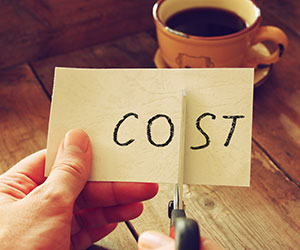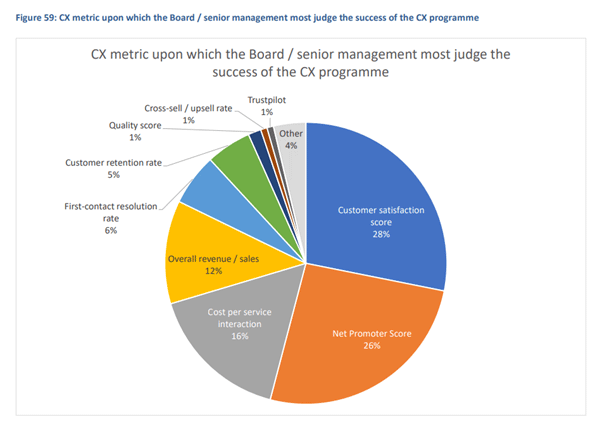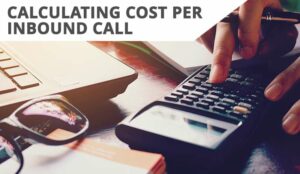Efficient cost management is crucial for the success of any contact centre. Therefore, monitoring your cost per inbound call (or cost per contact benchmark) is a great way to gauge the efficiency of your operations.
Here, we explore what the current cost per call benchmark is, the benefits of understanding your cost per call, and your next steps for calculating and improving cost per call in your contact centre.
What’s the Current Cost Per Call Benchmark?
According to ContactBabel’s 2023-24 UK Customer Experience Decision-Makers’ Guide (pg. 97), the typical cost per call is £6.26 (€7.25, $7.68).
However, it’s worth keeping in mind that a good cost per call varies depending on industry, location, and the complexity of services provided.
As a rule of thumb, however, a lower cost per call is desirable, and you should be aiming to consistently reduce your cost per call over time through efficiency improvements.
Therefore, it’s equally important to keep track of your own call centre’s cost per call benchmark, so you can monitor the success of any improvement initiatives over time.
How to Calculate Your Average Cost Per Call (Inbound)
Calculating the cost per call for inbound calls involves dividing the total cost associated with handling inbound calls by the number of inbound calls received during a specific period.
The formula to calculate cost per inbound call is:
Cost per Inbound Call = Total Cost of Inbound Calls / Number of Inbound Calls
What Do You Need to Factor in When Calculating Your Cost Per Call?
That being said, the above is just step one, as you also need to look at several other factors and nuances – unique to your operation – to calculate your true cost per call, including:

Overhead Costs
You must account for overhead costs such as rent, utilities, technology infrastructure, and administrative expenses.
Technology Expenses
This includes costs for call centre software, customer relationship management (CRM) systems, automated dialling tools, and any other technology investments.
Agent Attrition and Training
High agent turnover rates can result in increased training and onboarding costs, so make sure you also factor in the cost of hiring and training new agents, as well as ongoing training for existing staff.
Occupancy Rate
A low occupancy rate may indicate inefficiencies in staffing and can impact cost per call.
For information on how to measure and calculate occupancy in the contact centre, read our article: How to Calculate Occupancy
Call Abandonment Rate
Abandoned calls still incur costs, including telephony charges and potential lost business opportunities.
Service Level Agreements (SLAs)
If your contact centre has service level agreements in place, failing to meet them can lead to penalties or additional costs, so ensure that any fines or penalties related to SLA breaches are included in your cost per call calculation.
Quality Assurance Cost
Maintaining call quality and compliance often requires investments in quality assurance programmes, monitoring tools, and resources.
These costs should also be considered, as they directly impact customer satisfaction and operational efficiency.
Outsourcing and Third-Party Costs
If you outsource certain aspects of your contact centre operations, such as customer support or telemarketing, the fees paid to third-party providers should also be included.
Elasticity of Demand
Consider how fluctuations in call volume also affect your cost per call. During peak periods, for example, you may need to hire additional staff or use temporary agents, which can increase costs.
Steps to Reduce Cost per Call for Inbound Calls
Reducing the cost per call for inbound calls requires a strategic approach, including:
- Self-Service Options – Implement self-service options like IVR systems and chatbots to handle routine enquiries, reducing the need for live agents.
- Skill-Based Routing – Ensure calls are routed to agents with the appropriate skills, reducing handling times.
- Agent Training – Invest in agent training to improve their efficiency and problem-solving skills.
- Call Volume Forecasting – Accurately predict call volumes to staff your contact centre appropriately, avoiding overstaffing or understaffing.
- Knowledge Base – Develop a comprehensive knowledge base for agents to access information quickly and efficiently.
A Different Approach Is Needed for Outbound Calls
Here are some additional tips to help you also calculate and reduce your cost per call for outbound calls.
The formula to calculate cost per outbound call is:
Cost per Outbound Call = Total Cost of Outbound Calls / Number of Outbound Calls
Strategies for Reducing Cost per Call for Outbound
Reducing the cost per call for outbound calls requires a different set of strategies to inbound calls, including:
Targeted Lists
Use data analytics to create targeted call lists to increase the likelihood of successful calls.

Automated Dialling
Implement auto-dialling software to increase agent productivity by reducing idle time between calls.
Script Optimization
Create effective call scripts that guide agents without making them sound robotic.
Agent Performance Monitoring
Continuously monitor agent performance and provide feedback for improvement.
Compliance Management
Stay compliant with regulations like the Do-Not-Call list to avoid costly penalties.
Why Calculate Your Cost Per Call?
Once you can accurately calculate the average cost per contact in your call centre, it can really help with the following:
- Performance Measurement – It helps you evaluate the efficiency and productivity of your contact centre operations.
- Budgeting and Forecasting – Accurate cost per call data enables better financial planning and forecasting.
- Process Improvement – Identifying cost drivers can highlight areas where process improvements are needed.
- Competitive Advantage – Lower cost per call can give your business a competitive edge by allowing you to offer more competitive pricing or invest in customer service improvements.
- Showcasing CX Success – Cost per call figures can also be used to communicate your CX success to the wider company, as seen in the below graph (from: The 2023-24 UK Customer Experience Decision-Makers’ Guide, pg. 108), where 16% of industry professionals said ‘cost per service interaction’ is the CX metric upon which the board/ senior management most judge the success of the CX programme.

If you are looking for information on calculating other key call centre metrics, read these articles next:
- How to Calculate Customer Profitability
- How to Calculate Customer Lifetime Value – The Formula
- How to Calculate Contact Centre Spin
- How Do I Calculate… Cost per Call?
Author: Megan Jones
Reviewed by: Jonty Pearce
Published On: 14th Nov 2023 - Last modified: 19th Sep 2025
Read more about - Call Centre Management, An Introduction to Contact Centres, How to Calculate, Management Strategies





































